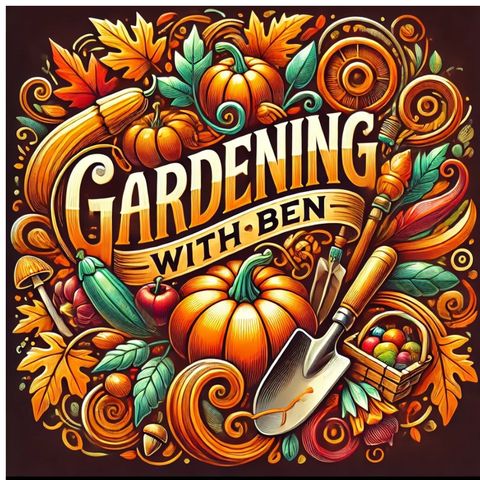"Preparing for Spring: Essential Tips for Your Allotment Garden | Gardening Podcast"

Download and listen anywhere
Download your favorite episodes and enjoy them, wherever you are! Sign up or log in now to access offline listening.
Description
Welcome to "Preparing for Spring: Essential Tips for Your Allotment Garden | Gardening Podcast," your ultimate guide to getting your allotment garden ready for the vibrant and productive spring season....
show moreAssessing and Preparing Your Allotment
**1. Soil Preparation:** Healthy soil is the cornerstone of a productive garden. Start by testing your soil’s pH and nutrient levels. Based on the results, amend the soil with organic matter such as compost, well-rotted manure, or leaf mold to improve its structure and fertility. Mulching is also crucial to retain moisture and suppress weeds.
**2. Clearing Debris:** Winter can leave behind a lot of debris. Clear away dead plants, fallen leaves, and weeds to give your garden a fresh start. This cleanup helps prevent pests and diseases from overwintering in your garden, ensuring a healthier environment for your plants.
**3. Planning Your Layout:** Use this time to plan your garden layout. Consider crop rotation to prevent soil depletion and reduce pest problems. Sketch out where each type of plant will go, ensuring they have the best conditions to thrive. Group plants with similar needs together to streamline maintenance.
Planting and Sowing
**1. Early Spring Vegetables:** Now is the time to start planting early spring vegetables like peas, radishes, and spinach. These crops can tolerate cooler temperatures and will give you an early harvest. Direct sow seeds into well-prepared soil and follow the recommended spacing and depth guidelines.
**2. Starting Seeds Indoors:** For crops that require a longer growing season, such as tomatoes, peppers, and eggplants, start seeds indoors. Use seed trays or small pots with good drainage, and place them in a sunny spot or under grow lights to encourage healthy growth. Starting seeds indoors gives them a head start and ensures they are ready to be transplanted once the weather warms up.
**3. Spring Bulbs:** If you didn't plant spring bulbs in the autumn, you still have time to do so in early spring. Bulbs like daffodils, tulips, and crocuses can add a burst of color to your garden. Plant them in well-drained soil at a depth of about three times their height.
Maintenance and Care
**1. Pruning and Trimming:** Prune fruit trees, shrubs, and perennials to remove dead or diseased wood and shape the plants. Proper pruning encourages healthy growth and improves air circulation, which is vital for plant health.
**2. Tool Maintenance:** Ensure your gardening tools are clean, sharp, and ready for use. Well-maintained tools make gardening tasks easier and more efficient. Clean and sharpen pruners, hoes, and spades, and oil wooden handles to prevent cracking.
**3. Watering Systems:** Check your watering systems to ensure they are in good working order. Repair any leaks and clean out irrigation lines. Consistent watering is crucial for plant health, especially during dry spells.
Listener Questions and Success Stories
We love engaging with our listeners! In this episode, we feature your questions about spring preparation and share success stories from fellow gardeners. Whether you need advice on specific tasks or want to celebrate your achievements, this segment is all about community and learning from each other.
Conclusion
"Preparing for Spring: Essential Tips for Your Allotment Garden | Gardening Podcast" is your comprehensive guide to making the most of the upcoming season. With expert tips, practical advice, and inspiring stories, this episode will help you prepare your allotment garden for a successful spring. Tune in, subscribe, and join us as we explore the joys and challenges of spring gardening. Happy gardening!
Information
Copyright 2024 - Spreaker Inc. an iHeartMedia Company

Comments